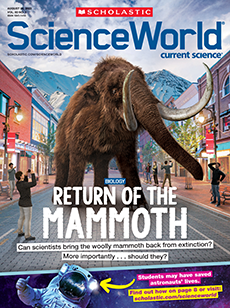Scientists don’t often get to study the sun’s corona, or wispy outer layer. The best time to view the corona is during a total solar eclipse. That’s when the moon passes between Earth and the sun, briefly blocking the sun’s light. Total eclipses only occur every 18 months. But now scientists have a new way to study the corona whenever they want: by creating eclipses on command!
This past December, the European Space Agency launched two satellites, called Proba-3, into space. One satellite blocks the sun, casting a shadow on the second satellite. This artificial eclipse will not be visible from Earth. The second satellite carries a camera and telescope, allowing scientists to observe the corona for up to six hours nearly every day.
“The corona is a big mystery,” says Dan Seaton, a solar scientist at the Southwest Research Institute in Colorado. This new mission could give scientists a chance to unlock the sun’s secrets.
